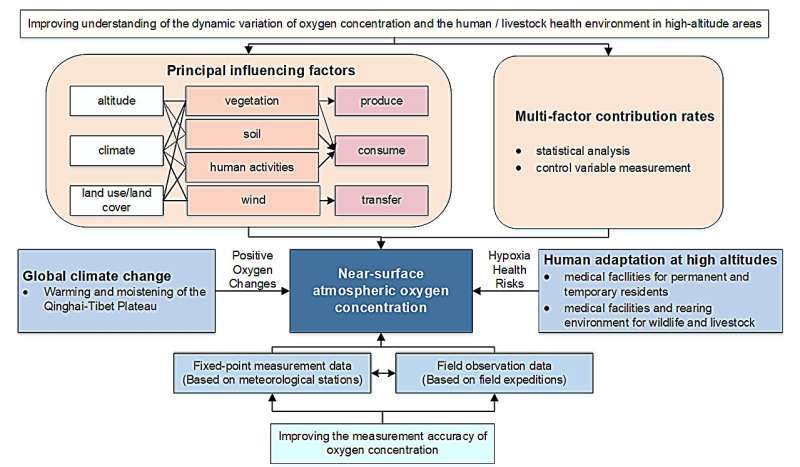This article has been reviewed according to Science X's editorial process and policies. Editors have highlighted the following attributes while ensuring the content's credibility:
fact-checked
trusted source
proofread
Influencing factors and contribution rates of oxygen concentration over the Qinghai-Tibetan Plateau recalculated

In a study published in the journal Science China Earth Sciences, a research team conducted joint observations of ecosystem oxygen production and carbon sinks and near-surface atmospheric oxygen concentrations on the Qinghai-Tibetan Plateau and meteorological elements at Beijing Fangshan Station from 2018 to 2020.
They obtained 422 sets of oxygen concentration route/sample data, 173 sets of fixed-point respiration/ photosynthesis observations data on the Qinghai-Tibetan Plateau, and over 160,000 measurements from the Beijing Fangshan Station.
Through the analysis of measured data, the research team found that solar radiation, atmospheric humidity, and ecosystem oxygen consumption and production have a significant impact on atmospheric oxygen concentration, and the impact shows temporal and spatial differences.
Vegetation significantly impacts oxygen concentration, with a relative contribution rate of 16.7–24.5%, which is underestimated in existing research.

These new measurement data and the analysis results provide an important basis for understanding the factors that influence atmospheric oxygen concentration and also remind us that in order better to understand the oxygen dynamics of the Qinghai-Tibetan Plateau, further field observations of soil respiration and vegetation photosynthesis are needed to clarify the contributions of carbon storage, carbon sinks and other factors to the near-surface atmospheric oxygen concentration.
The study was led by Dr. Peijun Shi and Dr. Jiang Lu from the State Key Laboratory of Earth Surface Processes and Resource Ecology, Beijing Normal University.
More information: Peijun Shi et al, Factors contributing to the oxygen concentration over the Qinghai-Tibetan Plateau and its contribution rate calculation, Science China Earth Sciences (2024). DOI: 10.1007/s11430-023-1238-7
Provided by Science China Press




















